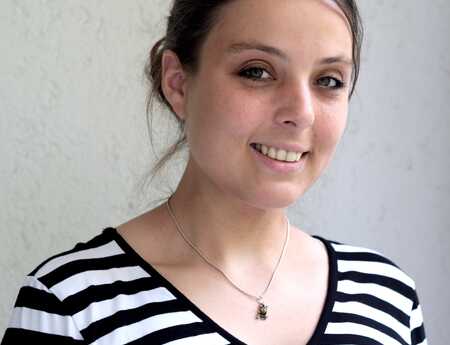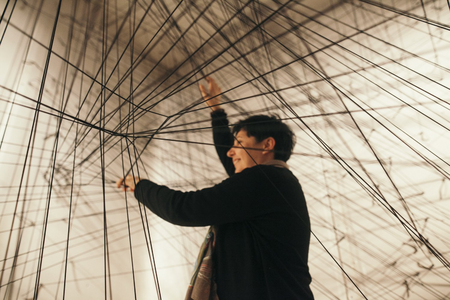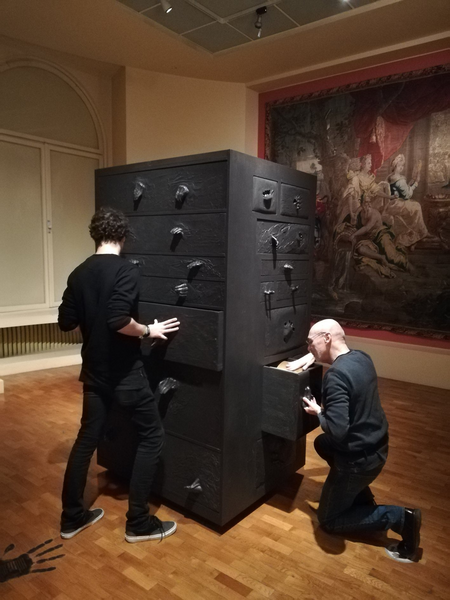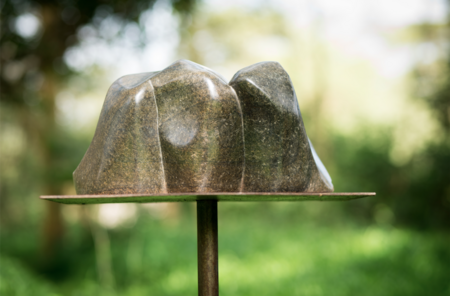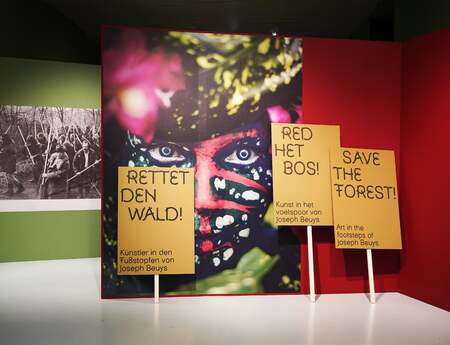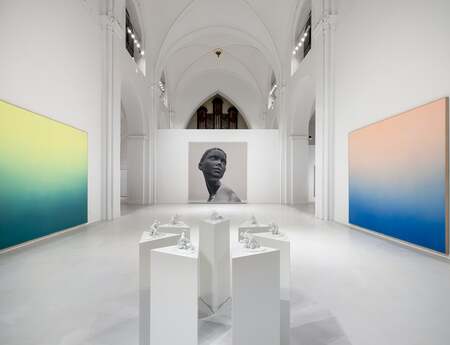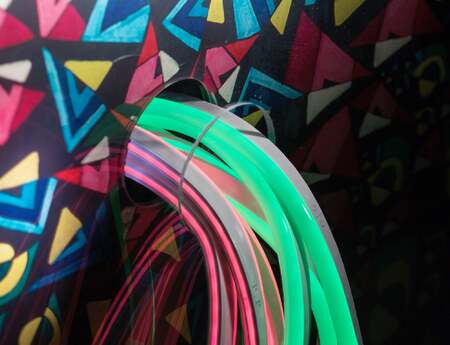Do Not Touch!
The instruction "Do not touch!" was once most commonly found in museums and galleries. The fact that it has spread to our entire lives in the wake of the Corona crisis is a huge challenge for all of us. This calls for a reflection on the value of touch— for us as humans and in art.
Let's be honest: The warning "Do not touch!" has always been more of a challenge than an imperative ever since we were children. And even years later, the odd visitor in a museum is bound to find themselves unable to resist the urge to touch a work of art. That’s quite understandable: We as human beings need to be touched, cannot even exist without touch. This is precisely why we find the current situation, in which it is not acceptable to touch each other in social settings, so difficult. With respect to our fellow humans, "Do not touch!" still applies for the time being, but perhaps it is time to question what the ban of touch in art is all about.
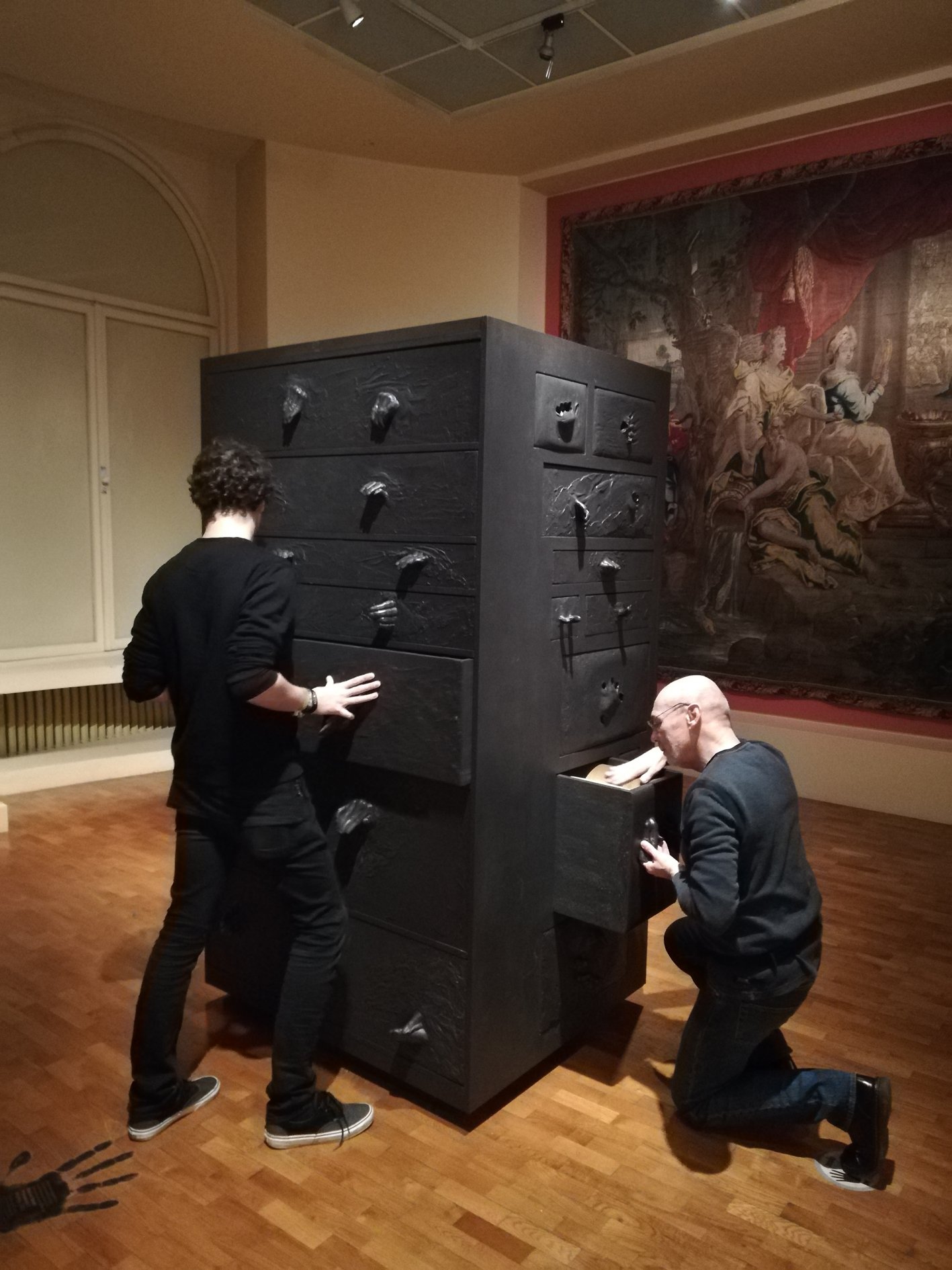
Marina Bauer, Delving, 2019. Object with
drawers, acrystalline, chipboard, various
materials and objects, 125 x 208 x 105 cm
drawers, acrystalline, chipboard, various
materials and objects, 125 x 208 x 105 cm
Yet sculptures in particular have a very special connection to touch. Not only is the act of creation extremely physical, often involving sweat and tears, but the result is, too. Who could resist rubbing the muzzles of the Munich lions in front of the Residenz? (Since legend has it that this brings good luck!) The variety of materials is also largely responsible for the tactile fascination which sculptures hold for us. What will touching them feel like? Smooth or rough, cool or warm, hard or soft? Touch opens up a different element of perception for us. Sometimes the eye is deceived, but if we can touch something, we can assure ourselves of our own senses.
Of course there are reasons against touching art: If 25,000 Louvre visitors a day were to touch the Venus of Milo, surely there would soon be even less of it left. Depending on the material, works of art can be extremely sensitive to touch. For this reason, initiatives such as Touching the Art, which calls for the liberation and democratization of art, predominantly on Instagram, have been met with some resistance in the art scene. This is not a bad idea, but one with messy consequences: Thousands of museum visitors took photographs of themselves touching artworks without permission and posted the images on social media. It is obvious that such actions are not necessarily about experiencing and understanding the art— the appeal of the forbidden was certainly a big driving force.
And yet there is art that we are allowed to touch, or even supposed to touch! Some pieces do not work at all without interaction with the observer (or in those cases: participant!). Sculpture Network gathers some artists who work in this way under our umbrella. Works like Puzzled by Manuela Granziol only come to life when they are touched.
They only reach their full potential when different people with different backgrounds, ideas, and aspirations interact with them. That way, their personalities become part of the artwork. Our coordinator Marina Bauer focuses particularly on this direct contact with a piece of art. Her works are about contact, about becoming one with the art again and again. Distance and invariability are foreign to most of her pieces. Sculpture does not simply exist, it happens! The How of these works is determined by the people who initiate and come into contact with them, as seen in Delving.

Mieke van Grinsven, "Extended Touch
Of course, physical interaction is not the only way to reference touch in art. Touch can be simulated visually, as in the works of sculpture network member Mieke van Grinsven. Or it can be represented abstractly. There are so many ways to reflect touch artistically, thereby touching the observer in a certain way.
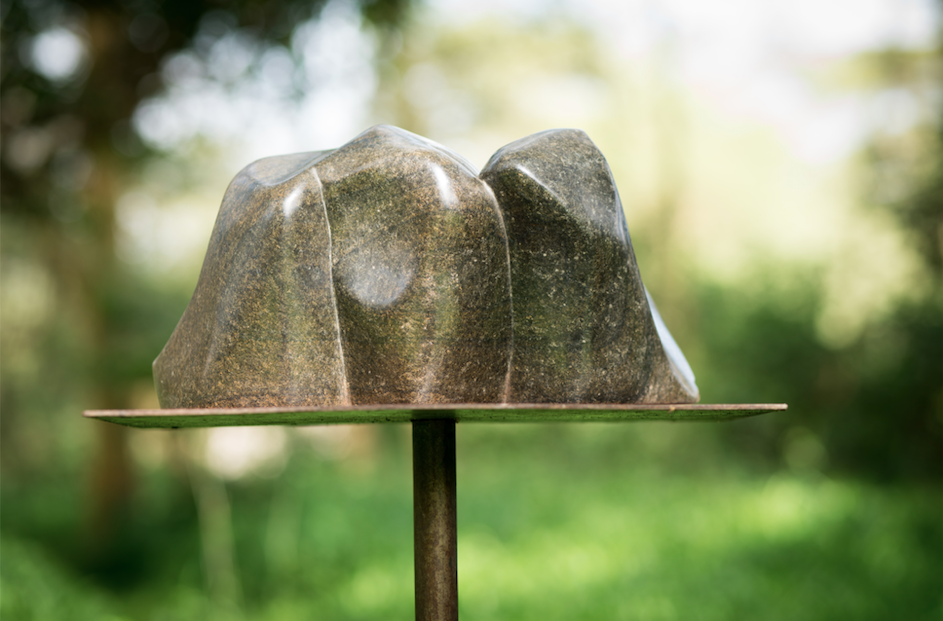
Mieke van Grinsven, "Compressed Touch"
And then there is the kind of art that by its very nature evades touch. For example, light installations of the kind that Yayoi Kusama can conjure up. (Our readers voted her their favourite female artist a while ago. If you would like to read more about it, we recommend this article). Her Mirror Rooms cannot be touched, they can only be experienced. As an observer, you immerse yourself in the lights and reflections, becoming one with the installation, but without touching it. In the time of Corona, this kind of art suffers most of all. What is reflected in a Mirror Room when the lights are off and the visitors are staying home? The Broad Museum has tried to find a cure: In its interactive online offer, Yayoi Kusama's Infinity Mirrored Room comes to life, accompanied by music from local artists. Never before has this installation had so many visitors at the same time, but now anyone can tune in online at any time and in any place.
Whether we can touch an artwork or not, ideally it touches us. The personal experience certainly plays a crucial role, but physical touch is not always part of it. And precisely for this reason, in times like these, we should be grateful for the digital possibilities of our day and age. Direct contact can’t be replaced by the Internet, but it does provide the opportunity for emotional connection with both works of art and our fellow human beings. In the end, there’s always one kind of touch that can be achieved without physical contact, in respect to people and art alike: the touch of the soul.
Title: Marina Bauer, Place, 2017, gypsum board \ construction, rubber bands, 295 x 250 x 250 cm


